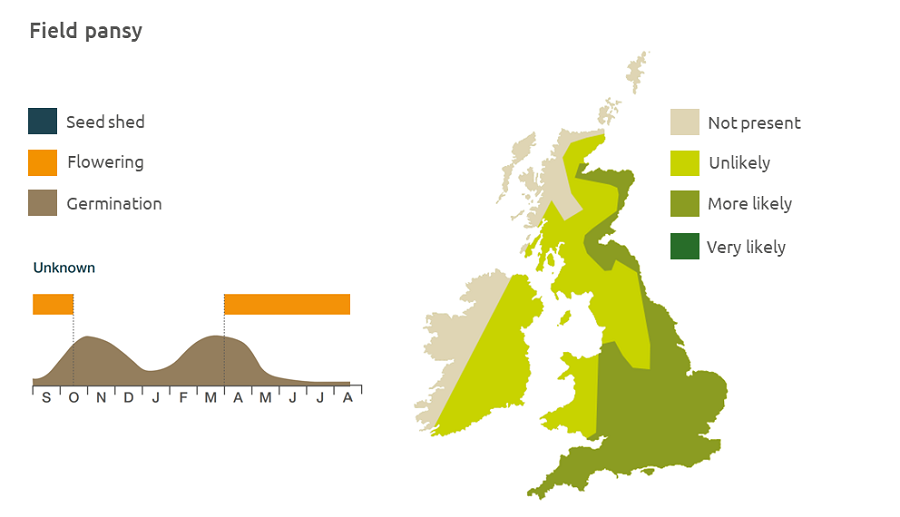- Home
- Knowledge library
- Distribution and biology of field pansy in the UK
Distribution and biology of field pansy in the UK
Field pansy is a widespread broad-leaved weed of cereal crops. Find out how to identify and control it.
Overview
Field pansy (Viola arvensis) is very widespread in cereal crops. It may be more common in winter crops but has increased in spring crops, possibly encouraged by winter cropping. Autumn-germinating field pansy can overwinter and these plants will flower early the following year. The seed is dispersed from an explosive seed head. The plant stems can interfere with combine cutter bar operation.
- It is particularly competitive in spring crops
- Some populations are associated with herbicide resistance
- It has value to biodiversity
Weed Resistance Action Group (WRAG)
Description
A rather weak semi-upright annual dicotyledon, up to 30 cm tall. The pale-green lobed or toothed leaves have deeply divided projections at the base. The typical pansy flowers are cream, possibly tinged with purple, and with a violet projection or spur behind.
Key features
Plant: Field pansy has a less robust appearance than wild pansy.
Flowers: It is distinguished from wild pansy by its paler smaller flowers. The petals are shorter than the sepals.

Location and life cycle

Geographic distribution
Field pansy is a weed of cultivated land or other open lowland habitats.
Soil type
It is found on all soil types with an open aspect but less frequently on poorly aerated or waterlogged soils.
Seed statistics
- Seed longevity: >5 years
- Seed decline: 36% per year
- Germination depth: 0.5 cm
- Seed weight: 0.4 mg
- Seeds/flower: 44–75
- Seeds/plant: 2,500
Management
Residual herbicide treatments are generally effective in autumn- and spring-sown crops.
For advice on herbicides, please speak with your agronomist or adviser.
When was this information last updated?
This page is based on content from the encyclopaedia of arable weeds publication. Since it was first released in 2008, the publication has been redesigned several times but not revised. However, it remains a good foundation for general information on the distribution and biology of weeds.

